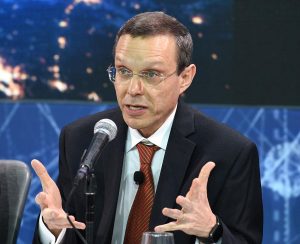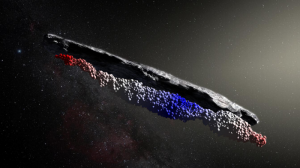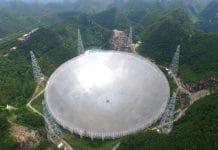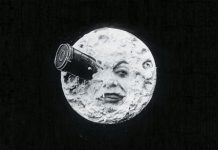Are we alone in the universe? Do other, possibly more advanced civilizations, exist, and more importantly, can we contact them, or have they already contacted us? These are questions that have vexed, if not haunted humankind for centuries, if not millennia.
From the time the first hominids stared up into our star-cluttered skies, to Claudius Ptolemy’s flawed theories about the movements about planets, to Aristotle’s incorrect geocentric depiction of our solar system, to the revolutionary discovery of the sun at the center of our existence by Nicolaus Copernicus, people have peered at the great expanse of “the final frontier” and asked: Is anybody out there?
But it wasn’t until Galileo di Vincenzo Bonaiuti de’ Galilei trained his telescope and vision upon the night skies and thoughtfully recorded his observations in a systematic, disciplined manner that a deeper understanding of our solar system and our universe began to crystalize.

The English-American socio-political critic and public intellectual Christopher Eric Hitchens said of Galileo, “We owe a huge debt to Galileo for emancipating us all from the stupid belief in an Earth-centered or man-centered (let alone God-centered) system. He quite literally taught us our place and allowed us to go on to make extraordinary advances in knowledge.”
In honor of the Italian-born astronomer and physicist that turned the metaphorical, if not the literal, world upside down, Harvard University’s Astronomy Department and Center for Astrophysics has embarked upon a search for extraterrestrial life in a multi-year project fittingly named The Galileo Project. The Galileo Project’s mission is couched as a moral imperative that science must move beyond the artificial constraints that have hindered our efforts to determine if we are alone in the universe, or share our heavens with others. As their website states:
Given the recently discovered abundance of Earth-Sun systems, the Galileo Project is dedicated to the proposition that humans can no longer ignore the possible existence of Extraterrestrial Technological Civilizations (ETCs), and that science should not dogmatically reject potential extraterrestrial explanations because of social stigma or cultural preferences, factors which are not conducive to the scientific method of unbiased, empirical inquiry. We now must ‘dare to look through new telescopes’, both literally and figuratively.
Much of the impetus to look for ETCs is based on the report Preliminary Assessment:Unidentified Aerial Phenomena, issued by the Office of the Director of National Intelligence (ODNI) in June of 2021. Commissioned by the US Congress, the charge of ODNI was “to submit an intelligence assessment of the threat posed by unidentified aerial phenomena (UAP) and the progress the Department of Defense Unidentified Aerial Phenomena Task Force (UAPTF) has made in understanding this threat.” In other words, explain the presence of, in common parlance, UFOs.
And although the UAPTF could not draw any firm conclusions about their many observations, their executive summary is enough to pique the interest of the scientific community at large:
There are probably multiple types of UAP requiring different explanations based on the range of appearances and behaviors described in the available reporting. Our analysis of the data supports the construct that if and when individual UAP incidents are resolved they will fall into one of five potential explanatory categories: airborne clutter, natural atmospheric phenomena, USG or U.S. industry developmental programs, foreign adversary systems, and a catchall “other” bin.
It is this “other” bin that intrigued Harvard University. Headed by Avi Loeb, Frank B. Baird Jr. Professor of Science and Harvard Astronomy Department Director, the Galileo Project boasts a collection of interdisciplinary experts from diverse fields such as engineering, astrophysical sciences, business and entrepreneurship, chemistry, physics, and of course, astronomy. Loeb makes the case for looking for UAPs in his recently published book, Extraterrestrial: The First Sign of Intelligent Life Beyond Earth, in which he describes the presence of a space object dubbed “’Oumuamua” (pronounced “oh moo ah moo ah”), which is Hawaiian for “a messenger from the distant past, reaching out to us.”

According to the New York Post, “The object in question traveled toward our solar system from the direction of Vega, a nearby star 25 light-years away, and intercepted our solar system’s orbital plane on Sept. 6, 2017. On Sept. 9, its trajectory brought it closest to the sun. At the end of September, it blasted at about 58,900 miles per hour past Venus’ orbital distance, and then, on Oct. 7, it shot past Earth’s orbit.” Ultimately, ‘Oumuamua moved “swiftly toward the constellation Pegasus and the blackness beyond,” Loeb writes in the book.”
Part of what intrigued Loeb was the shape and structure of Oumuamua, which scientists concluded was at least five to 10 times longer than it was wide, much like a cigar. As Loeb writes, “This would make ‘Oumuamua’s geometry more extreme by at least a few times in aspect ratio — or its width to its height — than the most extreme asteroids or comets that we have ever seen.” Loeb also observed that ‘Oumuamua was unusually bright and was “ten times more reflective than typical solar system [stony] asteroids or comets.”
Yet, the thing that really caught Loeb’s attention was ‘Oumuamua’s inexplicable trajectory. Using established principles of gravitational physics, scientists know that any object that approaches the sun (or other large astronomical body) will have its path influenced by the gravitational pull of that body. So, as an object gets closer, it will be pulled towards the body, and therefore will accelerate its velocity, and when leaving the proximity, the gravitational pull will slow its exit velocity. However, ‘Oumuamua didn’t behave that way. At some point, it actually accelerated as it left the influence of the sun, a sign of some type of external, propulsive force being involved.
Davide Farnocchia of the Center for Near Earth Object Studies (CNEOS) at NASA’s Jet Propulsion Laboratory offers a not so exciting but highly plausible theory about what happed with ‘Oumuamua, saying, “This additional subtle force on ′Oumuamua likely is caused by jets of gaseous material expelled from its surface,” adding “This same kind of outgassing affects the motion of many comets in our solar system.”
Yet, part of the puzzle here is that comets typically have tails in the form of dust, a phenomenon caused, according to the publication skyandtelescope.com, as comets “approach perihelion—the place in their orbits when they are closest to the Sun. The Sun’s heat vaporizes some of the comet’s material, releasing dust particles that were trapped in the ice.”
But ‘Oumuamua did not have this visible tail, making it an atypical comet. Still, as Karen Meech, an astronomer at the University of Hawaii’s Institute of Astronomy points out “. . . small dust grains, present on the surface of most comets, may have eroded away during ′Oumuamua’s long journey through interstellar space. It could be giving off gases that are harder to see than dust, but it’s impossible to know at this point.”

One argument that bolsters the comet theory is based on the work of astrophysicists Darryl Seligman and Gregory Laughlin. Seligman and Laughlin propose that the “. . . object was a comet made up partly or entirely of molecular hydrogen—lightweight molecules composed of two hydrogen atoms (H2).” This would explain the idea of propulsion through outgassing without the presence of a tail that accompanies comets.
Loeb, however, is not persuaded by this argument. He points out in a scientific paper he coauthored with Thiem Hoang, an astrophysicist at the Korea Astronomy and Space Science Institute, that comets are made of rock, covered by a shell of ice, a sort of “dirty snowball” that flies through space. During its space trek, comets are stripped of this shell by starlight, forming its classic tail. However, if an object, such as ‘Oumuamua was to be composed of solely ice, it would have long ago degraded as it made its way through millions of miles of space.
To his credit, Seligman acknowledges this theoretical flaw, stating “Hydrogen icebergs don’t live that long in the galaxy. And you definitely don’t have time to get all the way from [the nearest] giant molecular cloud.” Yet, scientists are a determined bunch, and Seligman and Laughlin offer an explanation: ‘Oumuamua is just 40 million years old, making it young enough to make its trek through space to us without being destroyed in the process.
Loeb is unconvinced of the validity of Seligman’s and Laughlin’s theory, arguing that “Shortening the distance that that H2 iceberg needs to travel does not solve the problems we outline in our paper, because the H2 iceberg would have formed when its parent planetary system formed, billions of years ago.” Following the logic of Seligman, billions vs. millions mean any frozen hydrogen object would long ago have dissipated.
Meanwhile, the scientific team at The Galileo Project have a clear mission to continue the work that Galileo himself started in the 16th century, the same time period that witnessed the enduring works of William Shakespeare, who spoke a universal truth about the mystery of life and space through his character Hamlet, who said, “There are more things in heaven and earth, Horatio,/Than are dreamt of in your philosophy.” Let’s hope Loeb and his team find these things, and that ‘Oumuamua is just the beginning of an answer to our question, Is anybody out there?
At Newsweed.com, we adhere to three simple principles: truth, balance, and relatability. Our articles, podcasts, and videos strive to present content in an accurate, fair, yet compelling and timely manner. We avoid pushing personal or ideological agendas because our only agenda is creating quality content for our audience, whom we are here to serve. That is why our motto is ”Rolling with the times, straining for the truth.”
Your opinion matters. Please share your thoughts in our survey so that Newsweed can better serve you.
Charles Bukowski, the Los Angeles beat poet that captured the depravity of American urban life once said, “There is something about writing poetry that brings a man close to the cliff’s edge.” Newsweed is proud to stand in solidarity and offer you a chance to get close to the cliff’s edge with our first Power of Poetry Contest. Are you a budding bard, a versatile versifier, a rhyming regaler? Do you march to the beat of iambic pentameter, or flow like a river with free verse? If so, here’s your opportunity to put your mad poetic chops to the test. Enter our poetry contest for bragging rights and an opportunity to win some cash!






